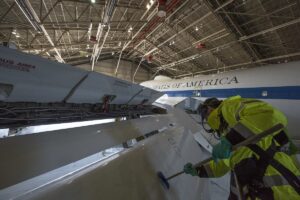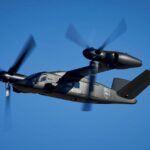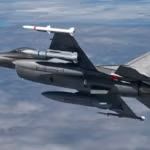
The U.S. Air Force and Navy may pursue separate aircraft for nuclear command and control missions for connecting ballistic missile sites and submarines to the president. In the meantime, the Navy is working with the Oklahoma City Air Logistics Complex (ALC), Boeing [BA] and Mississippi-based Vertex Company--a subsidiary of Vertex Aerospace, to replace corroded spar chords on the Navy's E-6B Mercury Take Charge and Move Out (TACAMO) plane. The E-6B, which had an original service life of 25,000 flight hours,…














